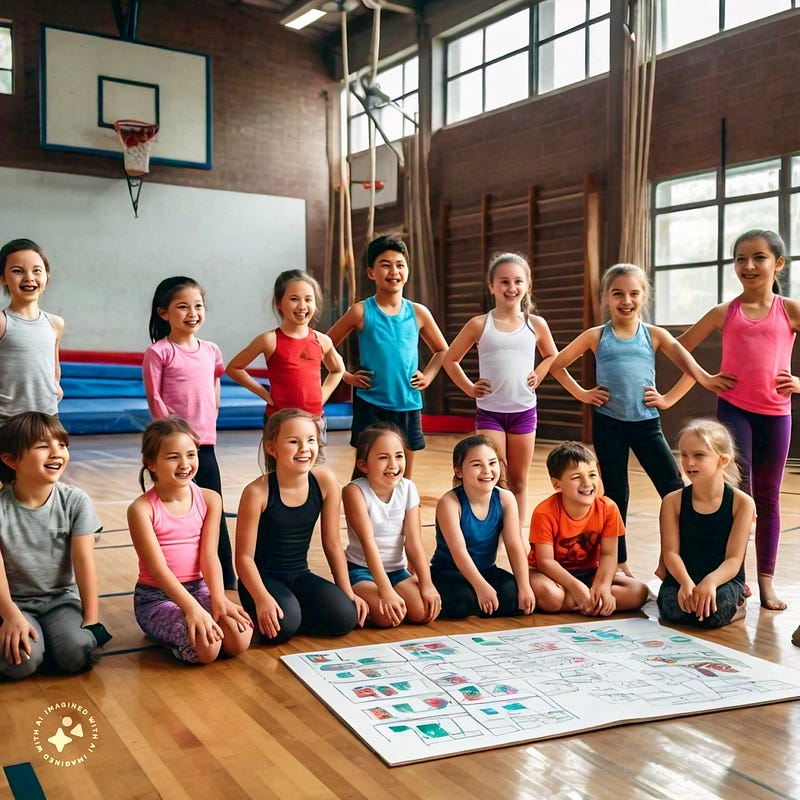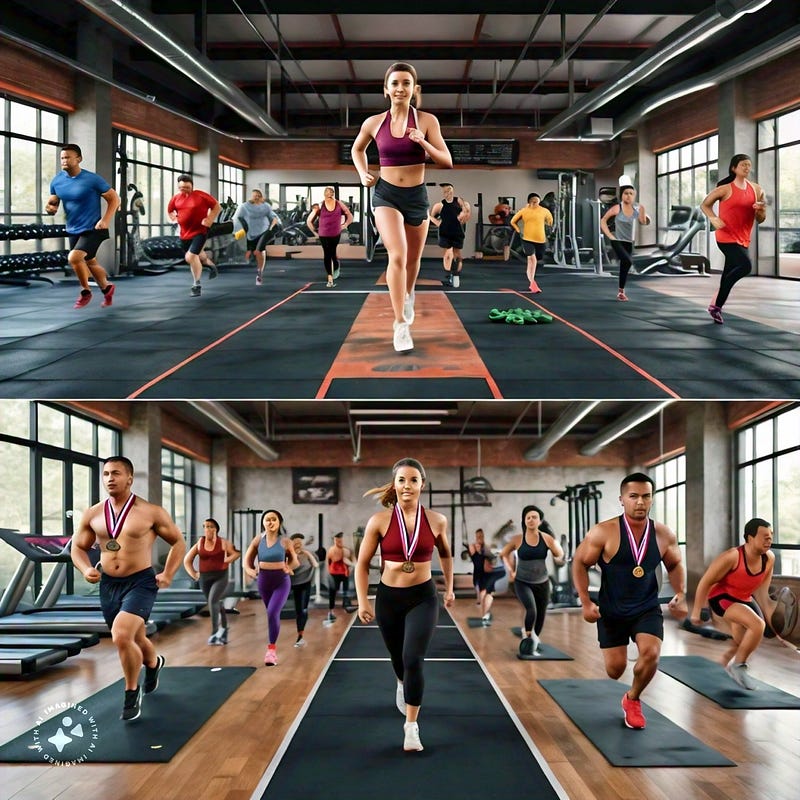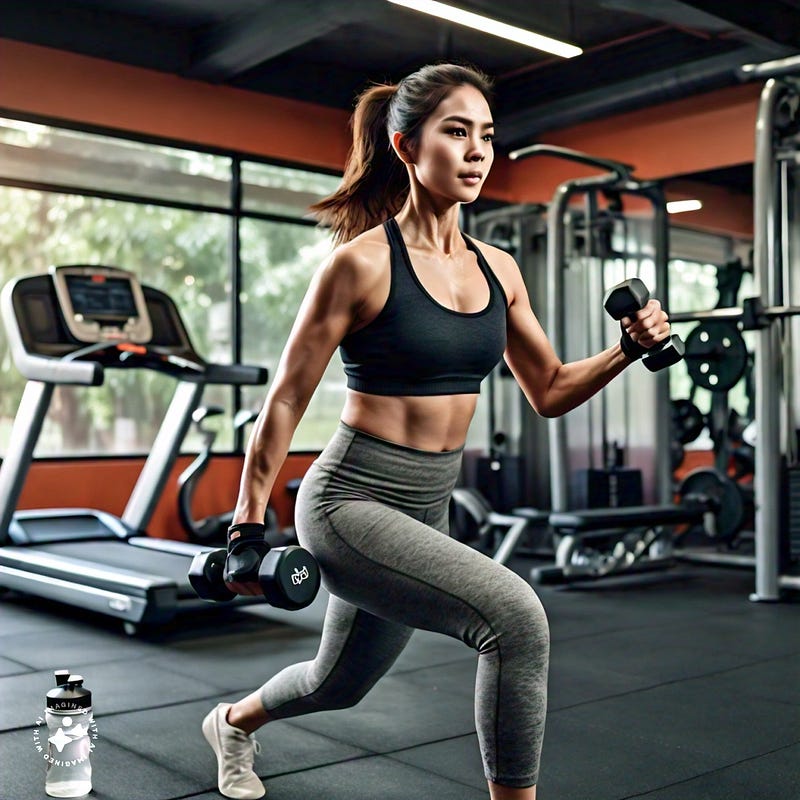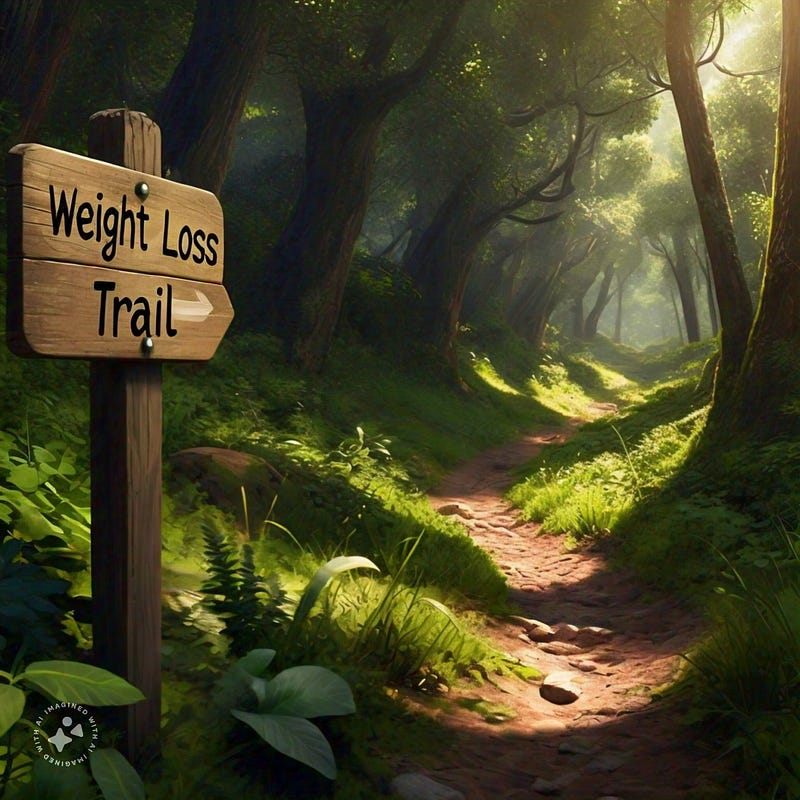🌟🏋️♂️Fitness Across the Ages: Tailored Workouts for Every Decade

Staying active is crucial at every stage of life, but the way we approach fitness evolves as we age. From playful activities in childhood to maintaining mobility in our senior years, each decade comes with its unique fitness needs and challenges. Let’s dive into the world of age-tailored workouts, exploring how fitness routines can be optimized for children, teens, adults, and seniors to ensure a lifetime of health and vitality.
Childhood (Ages 5–12): Building a Foundation

The Importance of Movement
Children are natural movers. They love to run, jump, and play, making physical activity an integral part of their development. Exercise at this age is all about building a strong foundation, enhancing motor skills, and fostering a love for movement that can last a lifetime.
Recommended Activities
- Play-Based Exercise: Tag, hide and seek, and obstacle courses. These games are not only fun but also improve agility, coordination, and cardiovascular health.
- Sports: Soccer, basketball, gymnastics, swimming. Organized sports teach teamwork, discipline, and improve overall fitness.
- Strength and Flexibility: Simple body-weight exercises like push-ups, squats, and stretching. These activities build muscle and flexibility without the need for heavy weights.
Challenges
- Screen Time: Encourage outdoor play and limit sedentary activities like watching TV and playing video games.
- Variety: Keeping activities varied to maintain interest and work different muscle groups.
Teenage Years (Ages 13–19): Growing Strong

The Importance of Structured Exercise
During adolescence, bodies undergo rapid growth and development. Exercise helps in managing these changes, building strength, improving cardiovascular health, and boosting mental well-being.
Recommended Activities
- Strength Training: Introduce weight training with proper guidance to build muscle mass and bone density. Start with light weights and focus on form.
- Cardio: Running, cycling, swimming. Cardio workouts enhance heart health and stamina.
- Flexibility and Balance: Yoga and Pilates. These practices improve flexibility, balance, and mental focus, which are crucial during growth spurts.
Challenges
- Peer Pressure: Encourage teens to engage in physical activities that they enjoy rather than those dictated by peers.
- Overtraining: Balance exercise with adequate rest and recovery to prevent injuries.
Click Here for a Perfect Pre-Workout Fuel For Beginners
Adulthood (Ages 20–40): Peak Performance

The Importance of Consistency
In the prime of adulthood, maintaining a regular fitness routine can help manage stress, maintain a healthy weight, and prevent chronic diseases. This is the time to focus on building a balanced fitness regime that includes strength, cardio, and flexibility.
Recommended Activities
- Strength Training: Incorporate compound movements like squats, deadlifts, and bench presses to build and maintain muscle mass.
- High-Intensity Interval Training (HIIT): Short bursts of intense activity followed by rest periods. HIIT is efficient and effective for burning fat and improving cardiovascular health.
- Flexibility and Mobility: Incorporate stretching routines and practices like yoga to maintain flexibility and prevent injuries.
Challenges
- Time Management: Balancing work, family, and fitness can be tough. Schedule workouts like appointments to stay consistent.
- Plateaus: Mix up routines and try new exercises to keep the body challenged and avoid fitness plateaus.
Middle Age (Ages 40–60): Maintaining Momentum

The Importance of Adaptability
As we enter middle age, our bodies begin to change, and so should our fitness routines. Focus shifts towards maintaining muscle mass, flexibility, and cardiovascular health, while also being mindful of joint health and injury prevention.
Recommended Activities
- Strength Training: Focus on maintaining muscle mass with resistance training. Use lighter weights with higher repetitions to protect joints.
- Low-Impact Cardio: Swimming, cycling, walking. These activities are gentle on the joints but still provide cardiovascular benefits.
- Flexibility and Balance: Yoga, tai chi, and stretching. These exercises improve flexibility, balance, and help manage stress.
Challenges
- Joint Health: Choose low-impact exercises to protect the joints and incorporate joint-friendly supplements if needed.
- Motivation: Find a workout buddy or join a fitness group to stay motivated and accountable.
Click Here to Claim Your Free Bonus of Refreshing Tea Remedies
Senior Years (Ages 60+): Staying Active and Independent

The Importance of Functionality
In the senior years, the goal is to maintain independence, improve quality of life, and manage or prevent chronic conditions. Exercise routines should focus on strength, balance, flexibility, and cardiovascular health, but at a gentler intensity.
Recommended Activities
- Strength Training: Use light weights or resistance bands to maintain muscle mass and bone density. Focus on functional movements that improve daily living skills.
- Low-Impact Cardio: Walking, swimming, and cycling. These activities improve heart health without putting stress on the joints.
- Flexibility and Balance: Tai chi, gentle yoga, and stretching. These exercises enhance flexibility, improve balance, and reduce the risk of falls.
Challenges
- Medical Conditions: Always consult with a healthcare provider before starting a new exercise routine, especially if there are existing health conditions.
- Energy Levels: Listen to your body and adjust the intensity and duration of workouts accordingly.
Across All Ages: The Universal Principles
While tailored workouts are crucial for different life stages, certain universal principles apply to fitness across all ages:
Hydration
Staying hydrated is essential for optimal performance and recovery. Drink plenty of water throughout the day, especially before, during, and after workouts.
Nutrition
A balanced diet rich in whole foods fuels the body, supports recovery, and enhances performance. Incorporate a variety of fruits, vegetables, lean proteins, and healthy fats into your diet.
Rest and Recovery
Rest days and adequate sleep are critical components of any fitness routine. They allow the body to repair and grow stronger.
Mental Health
Exercise has profound benefits for mental health at any age. It reduces stress, improves mood, and boosts overall well-being. Mindfulness practices like meditation can complement physical activity.
Listening to Your Body
Pay attention to how your body feels and respond accordingly. Push yourself, but know your limits to avoid injury and overtraining.
Conclusion
Fitness is a lifelong journey that evolves with age. By tailoring workouts to fit the specific needs of each life stage, we can optimize our health, performance, and quality of life. From the playful energy of childhood to the careful maintenance required in our senior years, staying active is key to living a vibrant and fulfilling life. Embrace the changes, listen to your body, and keep moving forward — no matter your age. For more detailed fitness plans and tips, visit our blog and embark on a journey to lifelong fitness and health.
Discover the Nature’s Secret to Accelerating Weight Loss — Click Here to Learn More

Comments
Post a Comment